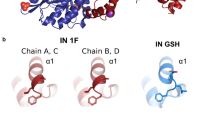Abstract
We have previously shown that a molecule consisting of a fusion of a Ca2+-dependent nuclease (from Staphylococcus aureus) to a retroviral coat protein specifies a potent antiviral specific for that retrovirus. Genes specifying such fusion proteins can be delivered to virus-susceptible cells, providing an antiviral gene therapy aimed at limiting virus spread. We report here the results of experiments to vary the nuclease moiety of such fusion proteins. We found that one nuclease, Serratia marcescens nuclease, was extremely toxic to host cells and hence not likely to be useful for therapeutic purposes. A second nuclease, Escherichia coli RNase HI was found to be nontoxic and highly effective against a murine leukemia virus when it was fused to the leukemia virus coat protein. The fusion protein was enzymatically active and stably expressed, without apparent toxicity to host cells. Reduction in infectious virus output was as high as 97–99%. These studies provide a model system for the development of gene therapeutic agents aimed at combating retroviral infections in vivo.
Similar content being viewed by others
Author information
Authors and Affiliations
Rights and permissions
About this article
Cite this article
Schumann, G., Cannon, K., Ma, WP. et al. Antiretroviral effect of a gag-RNase HI fusion gene. Gene Ther 4, 593–599 (1997). https://doi.org/10.1038/sj.gt.3300421
Received:
Accepted:
Issue Date:
DOI: https://doi.org/10.1038/sj.gt.3300421
- Springer Nature Limited




